Shelina Zahra Janmohamed's Blog, page 12
February 11, 2012
Published on FT.com: Building global halal brands
This was published in the FT yesterday.
The race is on to establish powerful international 'halal brands'. The stakes are high: by some estimates, the global market for halal products is worth $500bn a year.
But it's a market strewn with confusion, as separate Muslim countries try to establish recognised standards and producers from outside the Muslim world also hurry to enter the market. That leaves many Muslim consumers crying out for reliable brands that will help them guide their choices.
First, for the uninitiated, what is halal? In its broadest sense, it applies to anything that is "permitted" or "lawful"and covers everything from food to finance to logistics. In a narrower sense, it covers anything made from animal products, especially food, personal care products and pharmaceuticals.
Certification in these industries can be especially tricky. That makes it all the more important for marketers to establish credible brands that give Muslim consumers the assurance and confidence they crave. As halal brands proliferate, those that can establish instant recognition and credibility will gain a larger mind share and pocket share among Muslim consumers. As in any industry, brands that establish first mover credentials are likely to win.
For now, the race to establish recognised brands is being conducted at country level. Brunei Darussalam sees the 'Brunei Halal Brand' as a means of diversifying its economy away from oil. It focuses primarily on food and offers small and medium sized enterprises an umbrella brand under which they can reach an international audience.
As part of that effort it plans to open a UK facility in Birmingham, a city with a large Muslim population. It also wants to strengthen its Islamic association in the minds of Muslims, with a tourism initiative titled "Brunei Islamic Experience." The aim is to net a share of the blossoming halal tourism market, which requires halal certified hotels and restaurants.
Singapore is also vying to create value with its Singapore Halal Brand. The minister for Muslim affairs spoke recently about how a quintupling of halal-certified restaurants has boosted tourism. Given that two of Singapore's biggest markets for tourists are Malaysia and Indonesia, the increase in halal food availability is a clear win.
Similarly, Malaysia's JAKIM (Department of Islamic Development) wants to establish itself as a global standard, supported by the Halal Industry Development Corporation, set up by the government.
Governments outside the Muslim world are also joining in. New Zealand Trade and Enterprise has identified halal as an emerging global trend that holds promise for the country's food and beverage and cosmetics industries. The government in the Philippines – a predominantly Roman Catholic country with a Muslim minority – recently issued halal guidelines. Even Carrefour in France has brought a range of halal products to market – though .
We must take Muslim nations at their word when they say they are developing Muslim brands with a view to the welfare of their Muslim citizens. But to achieve that aim, internationally-recognised standards will be important, by delivering clarity and ease of deciphering the various halal brands.
None of this means there is not room in the market for many brands. But there are tips to follow and pitfalls to avoid if a brand is to enjoy success.
Even where standards are shared, brands of course will vary. This is where differentiation is important. Brands can exhibit different values and can excel tremendously through communications and engagement with target consumers. For brands that want to win loyalty, standards are the technical backbone, the must-have qualities. But for the brand to engage with consumers, it must be a friend and support the consumer's Muslim lifestyle.
The most important quality for a consumer halal brand is to offer clear, simple and credible information on what makes the product halal and who has certified it. With modern manufacturing techniques involving a myriad of ingredients and processes, and inputs from multiple sources, it can be hard for a lay customer to know definitively whether a product is halal.
From our own research across Muslim markets, we found that Muslim consumers yearn for brands to help them identify products to support their chosen lifestyles. The halal brand they select becomes a byword for the level of piety that suits them and represents who they are.
Brands must explain their halal credentials, of which one aspect is a clear and credible logo. But a halal brand is much more than a logo. It must stand for values that are important to the Muslim consumer: purity, integrity, transparency and wholesomeness, to name a few. For tech savvy futurists who are the most influential among Muslim consumers, putting clear information on the web is crucial. Equally important is that retail staff should be primed on the halal logo used and the certifier.
For products other than food and beverages, an explanation of what it means to be halal and how the product achieves it is even more important. In the halal cosmetics industry, this means no alcohols and no animal-derivative ingredients. There is also a growing trend towards ethical and organic production, as well as use of traditional, local ingredients.
What national brands must avoid is conveying a sense of competitiveness or bickering. While standards may vary, there is nothing more off-putting for Muslim consumers than what they see as the un-Islamic behaviour of putting another brand down or causing confusion. Above all, brands must exude credibility.
The last point is particularly crucial for halal brands from non-Muslim countries. Muslim consumers will ask: under what authority is this product deemed halal? Our research found that Muslim consumers are not averse to such brands. Whether they are of Muslim origin or not, along with halal credentials, what consumers want is quality, care and clarity.
Malaysia, Indonesia and Brunei are mooting unified halal standards. Such moves should be supported – the more products that carry a global halal brand, the more familiar and accepted it will be among consumers.
But unification is not easy. Participants must see the value in going through the process. In Brunei, for example, restaurateurs said the process was too complicated. Certification must be rolled out with positive buy-in, or it risks alienate those providing goods and services. Hotel owners in Malaysia faced exactly this issue.
The takeaway message is that credibility and clarity are the fundamental pillars of any global halal brand. Muslim consumers see halal brands as their allies in building their Islamic lifestyle. Halal brands must keep this trust in mind and ensure that their products and communications express how this trust is valued, and how the brand helps to safeguard its consumers' well-being.
Shelina is a senior strategist at Ogilvy Noor, the world's first bespoke consultancy for building brands with Muslim consumers. Ogilvy Noor is part of Ogilvy & Mather.
February 2, 2012
BBC Radio 2 "Pause for Thought" : Second Chances
This is the text for my Pause For Thought that was aired this morning on BBC Radio 2 on the subject of 'Second Chances.'
You can listen to the audio if you are in the UK for the next 7 days.
Last week the British Museum opened an exhibition about the hajj the Islamic pilgrimage. It's believed to be the first ever of its kind, showcasing historic artefacts collected from around the Muslim world which depict how integral this journey is to the global Muslim population.
 Mecca of course has religious significance for Muslims as the place towards which Muslims pray. It is the destination for the journey of a lifetime. But more than this: taking part in the hajj gives pilgrims the chance for a fresh start, to wipe away the sins, the regret, the remorse and the hurt we so often carry with us for years.
Mecca of course has religious significance for Muslims as the place towards which Muslims pray. It is the destination for the journey of a lifetime. But more than this: taking part in the hajj gives pilgrims the chance for a fresh start, to wipe away the sins, the regret, the remorse and the hurt we so often carry with us for years.
Although it's the iconic black cube called the Kaba which springs to mind when speaking of the hajj, it is in fact the desert known as Arafat which marks the turning point for pilgrims. Here under the fierce afternoon sun in the barren sands the pilgrims will gather to pray for purification and forgiveness. This is where redemption is granted.
As afternoon gives way to dusk, they move forward to the next stage of the hajj, ready to begin their second chance. All the troubles and peccadilloes are wiped clean. There's a palpable lightness of step in the feet of the pilgrims, an excitement at beginning life anew. Even the white clothing that all pilgrims wear is a public display of starting again.
When the pilgrims return home, they're greeted by the whole community who present them with garlands of fresh flowers. In Muslim countries even ministers will go to the airport to greet the returning hajjis. This is because the entire community recognises that these people have been given the opportunity for a second chance. This becomes a public celebration, to rejoice in the chance to start afresh.
We don't need to wait for an epic once in a lifetime event to give ourselves a second chance. We too can spend time thinking about how we will move forward, unshackling ourselves from our previous burdens, and releasing our regrets.
We must look forward just as the pilgrims do in the hajj, rather than looking back. Like the pilgrims, realising we are not alone in this quest gives us strength.
Most importantly, just as the pilgrims embrace the opportunity for a second chance, we too can be kind to ourselves and offer ourselves the chance for redemption.
January 25, 2012
British Museum exhibit offers visitors a chance to experience Muslim pilgrimage
This article was published yesterday by Common Ground News Service.
London – Qaisra Khan and I are standing in the Round Reading Room of the world-renowned British Museum in London. Around us people are busy installing historic artefacts from the Muslim world relating to the haj, the pilgrimage to Mecca – a principal religious obligation of adult Muslims.
 Khan is one of the curators of the exhibit "Hajj: Journey to the heart of Islam", which will open on the 26th of January at the British Museum. She is visibly excited that those who are not Muslim will finally get to vicariously experience the pilgrimage through this pioneering exhibit. Relics painstakingly gathered from public and private collections from the UK, Saudi Arabia and other parts of the world are on display. Loans from Saudi Arabia include a seetanah, an embroidered cloth that parts in the middle to allow entry into the Kaaba itself when being used. The reds and blues which surround the stitched Arabic calligraphy highlight the richness of the Qur'anic text that adorns the cloth.
Khan is one of the curators of the exhibit "Hajj: Journey to the heart of Islam", which will open on the 26th of January at the British Museum. She is visibly excited that those who are not Muslim will finally get to vicariously experience the pilgrimage through this pioneering exhibit. Relics painstakingly gathered from public and private collections from the UK, Saudi Arabia and other parts of the world are on display. Loans from Saudi Arabia include a seetanah, an embroidered cloth that parts in the middle to allow entry into the Kaaba itself when being used. The reds and blues which surround the stitched Arabic calligraphy highlight the richness of the Qur'anic text that adorns the cloth.
The exhibit offers the opportunity to hear about both contemporary and historic pilgrim experiences. My eye is caught by an original map identifying the possible routes for the Hijaz Railway, which was planned by the Ottoman official Haji Mukhtar Bey during his own haj.
On the other side of the hall is a brightly coloured, almost cartoonish image of a group of people. Among them is a pilgrim, standing on the edge of a sandy plane surrounded by intense blue. It is a painting from southern Egypt, where for hundreds of years members of small villages have painted these images to depict the departure of the pilgrims.
When it comes to Muslims, Khan says, "All we hear about is 'sharia', and actually this is one of the few times when there is none of that – it's just about what it is like to be Muslim." Her aspiration is that visitors will be granted this experience.
It is a profound sentiment and one which calls for further reflection: What does it feel like to stand in someone else's shoes and experience the world from their perspective?
The haj is a primary instance of creating connections with other people by sharing space and time with them. As pilgrimages go, it is not the largest in scale, but it certainly has the most diverse group of participants –bringing together people from over 180 nationalities last year.
Amongst the historic artefacts in the exhibit is a 15th century painting from Shiraz (in modern day Iran) which depicts a throng of people inside theharam, or holy sanctuary, in Mecca. The artist has depicted a sea of humanity with skin tones from black to white and every shade in between.
On the other side of the hall is a photograph from 2009 showing contemporary pilgrims at the desert of Arafat where pilgrims journey for forgiveness. Again, the faces are a portrait of humanity, joined together in their single quest for forgiveness, united by the same simple white clothing, all external differences erased. Any pilgrim who joins can't help but get to know those from different countries and cultures and in turn be changed by the realisation of their shared humanity.
The British Museum's haj exhibition attempts to recreate this intense experience by sharing it with a wide audience.
Such co-sharing of space and time is crucial to our development of empathy, and triggers an instinctive willingness to help others. The event of haj is an epic experience, but taking action to create empathy is something that happens on a day-to-day level too. We human beings can create this kind of empathy by supporting others in what they feel is important.
I have seen this in action at a mosque in London, which organised for its congregation to attend midnight mass at Christmas to create bonds with the local Christian community. And when I was living and working in Bahrain, I saw Sunni Muslims show their support and understanding when Shia Muslims commemorated Ashura, a ritual day of mourning, by sending food so that their Shia friends would not be detained by chores on a day of great importance to them.
Sharing experiences is vital to creating emotional bonds and support. Although this exhibition is a historic and cultural enterprise, and refreshingly apolitical, it offers visitors – Muslim or non-Muslim alike – the chance to stand in someone else's shoes for a moment. And that is something, in our world of unfortunate divisions, which is always to be welcomed.
January 7, 2012
It's not women who need preaching about "corruption" and "social responsibility"
Here's my weekly column from The National.
Men are poor helpless creatures who can't control their feelings or libidos, or so it seems they want society to think. I'm a believer in the general goodness of most men, but baffled by the attitude that they are helpless in the face of womanly charms and must therefore refer to themselves in derogatory and weak ways.
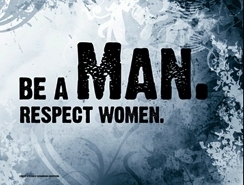 Take this comment – a mild one compared to many – I came across while reading about a new line of Islamic fashion: "If a girl attracts other males even unintentionally, it will end up to be a sin [sic] … So style in Islam is OK, but it should be limited to an extent that won't create new feelings within the pervert males of today." Baffling that it's not the "pervert males" responsible for their warped feelings.
Take this comment – a mild one compared to many – I came across while reading about a new line of Islamic fashion: "If a girl attracts other males even unintentionally, it will end up to be a sin [sic] … So style in Islam is OK, but it should be limited to an extent that won't create new feelings within the pervert males of today." Baffling that it's not the "pervert males" responsible for their warped feelings.
This is on the same dimension as arguments against women being educated, or driving: that they will spread "corruption" by entering the public space. Or recent comments by the former head of the women's studies department at Bangalore University telling women how to dress to avoid rape, but no edict telling men not to rape.
We get it: men think women are the source of corruption and that in order to stop the world coming to an end you must tell us what to think and how to act (and what to wear) because of course we have no brains, no sense of social responsibility, no spirituality and no reason. Oh wait – you say we do? Because that is just logic? And because it is our human fitrah to have all of those? And because the Quran says that we are all equal in spirit? Oh right.
Women are constantly preached to about social responsibilities even though we are not the ones responsible for most domestic abuse, violence, crime, rape or "corruption". It's time for our menfolk to preach to themselves about social responsibility.
It takes two to tango, so even if your outrageous idea that women are responsible for "corruption" is true, why don't you stay away from them? Too weak? Oh dear, how can you run a society if you are too weak to resist a woman?
So now you have a choice in the arguments you employ: are you too weak in the face of women's "corruptive" influence, which therefore means you are too weak to "lead" them? Or are you strong enough to lead, which means that it should be water off a duck's back if women participate in society. Which is it to be?
I want to emphasise that I believe both men and women have responsibilities to act and dress modestly. To achieve social harmony, creativity and spiritual ease, both must participate fully but be equally modest and respectful.
So brothers, fathers, male colleagues – extend a little respect to the womenfolk around you. They are not toys, slaves, maids, objects or chattel to be bought, sold or bartered. Women are people. Yes, people.
And if you are a man from a society that isn't majority Muslim in culture (note my use of the word "culture" and not the phrase "Islamic in religion"), please don't look smug. There is plenty of oppression, abuse, violence and discrimination against women in all societies that no man – and no society – anywhere can be holier than thou.
So for men and societies everywhere, here are your mantras for 2012: be nice to women, be respectful of women's intelligence and change yourselves instead of blaming women for the "pervert males".
January 4, 2012
Getting ready for 2012: from money to the meaning of life
Here is this week's National column published on new year's eve.
As the year comes to a close, one of my perennial resolutions rears its head and commands me: take better control of the household budget. The talk at a global scale of bankruptcy, poor credit and downgrading has made the resolution ever more urgent. Where are my slippery and elusive pennies going?
Don't tell my Dad about this confession, he will give me a stern look and tell me that he taught me better, that money doesn't grow on trees, that a man one penny in the red is a poor man, and a penny in the black is rich. I know I ought to know all this, but before you make me blush, are you able to account for your expenditure down to the last penny, cent or fils?
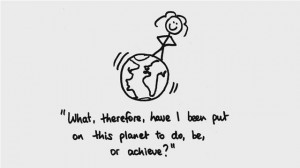 The pessimism I feel about my financial management is exacerbated by the fact that it seems ever more important to get a grip on it. Somehow, the fact that the world's leading economists, and in particular the European leaders, found themselves in difficulty this year while trying to manage a successful budget for their countries, suggests that I should try to do a better job in my own little domain.
The pessimism I feel about my financial management is exacerbated by the fact that it seems ever more important to get a grip on it. Somehow, the fact that the world's leading economists, and in particular the European leaders, found themselves in difficulty this year while trying to manage a successful budget for their countries, suggests that I should try to do a better job in my own little domain.
But if all those clever people overlooked the flaws in their financial systems, how am I supposed to manage any better?
I've done what all aspirational budget managers have done: I've created an extensive and detailed spreadsheet to list out all the outgoings. And there are a lot of them.
It's easy to spot where I can get better deals on regular household expenses – although it will take some time to work through the changes. But the main struggle is in adjusting lifestyle: do I want to give up the enjoyable holidays? I love buying pretty clothes for my baby. And what harm is there in a pleasurable if slightly overpriced cup of coffee a couple of times each week?
Therein lies the crux of my challenge: getting the best deals is a straightforward if tedious task. My bigger challenge is deciding what kind of life I'd like to live: frugal to the point of asceticism? Cautious and sacrificing some pleasures of daily life? Sensible but enjoyable? Carefree, tomorrow will take care of itself?
To me, these questions raise the issue of identifying a deeper truth about who I am and who I aspire to be.
I often think that we could easily live in a much smaller abode, with fewer things and less obligations. Isn't that the right approach for someone who wants to spend time nurturing their spirit rather than their bank balance?
On the other hand, our home offers sanctuary for the family, a place of exploration for our child and an enjoyment of the good things in life.
There's no profligacy or extravagance. A car, a good school for baby, smart clothes (but not designer) to be well presented, the education of seeing the world on our travels: I see these as blessings we are able to afford. I see these as to be balanced with work for the community, charitable giving and constant thankfulness for all that we have.
My spreadsheet may help me to balance the books. A spreadsheet can never help me to build a balanced life: for that I need constant reflection, a generous helping of wisdom and a selfless love of those around me.
Most of all what I need is an appreciation of the value of all that I have, and I am fortunate to have a great deal. What a wonderful way to start 2012. Happy New Year!
December 29, 2011
How we create the stories that shape the lives and futures of our babies
Another column I'm posting a little belatedly from my weekly 'Her Say' column in The National.
On the top shelf of an old cupboard in my parents' spare room is a collection of aged, fraying bags that hold the memories of our family. I have to stand on a stool and stretch into the cupboard's dark corners, feeling my way with my fingertips to grasp the tatty plastic filled with decades of old photographs.
As the winter holidays approach, nostalgia percolates the family conversations, and inevitably someone will wonder about a distant relative, a half-forgotten baby photo, or a snap from a wedding. I will fly upstairs to retrieve the bags, returning triumphantly to the conversation and spilling out our collective memory across the carpet.
We've seen the photos a hundred times, but each one elicits a gasp of excitement, as though greeting the old relatives themselves. "Look, it's granny! She's so pretty." "This is me when I was younger. I've become so old!" "Here you are at your graduation!"
The most exciting pictures are in black and white, fragments of an earlier time when photographs were rare, usually formal, marking special occasions. "This one," says my mother, "was sent by your uncle after he proposed to your aunt". He looks like Cary Grant. "And this," she carries on, pointing to a grainy picture "is my grandfather". He is serious, almost stern.
 Our family archive lives on in these four bags. Everything else is lost and therefore forgotten. What remains defines what came before us, and therefore what we are now. The camera has preserved and thus shaped our family history.
Our family archive lives on in these four bags. Everything else is lost and therefore forgotten. What remains defines what came before us, and therefore what we are now. The camera has preserved and thus shaped our family history.
This was on my mind this week as I faced up to the growing mountain of photographs of my baby. Although not even a year old, I already possess more than 5,000 pictures of her.
I have been creating a photobook for her. Websites offer software in the format of a book, which you populate with your own choice of photographs, in any layout and with any captions you choose. Once completed, the online creation is sent to be printed, arriving a few days later in the form of a glossy publication like a coffee-table book, entirely to your specification. At the cost of about $40, it is a modern marvel. Your photographs become official. Viewing them becomes slick and manicured. Family and friends flick easily through the edited highlights, enjoying the best moments, avoiding polite boredom.
I spent hours, probably days, selecting pictures to chart Baby's progress from tiny newborn through each of her milestones. I decided who would feature in her life story. I selected which pictures would make the cut, and therefore how she would be remembered.
My editorial process says as much about me as her. It reveals how I wish her to be seen. I am conscious that how we describe babies affects others' perceptions of her for many years, even a lifetime. After all, what will remain after our memories have faded are these photographs. We will continue to discuss the photobook in the same way as the fragments of my parents' haphazard photo collection. But this time, I've already consciously shaped the story and the collective memory.
The pleasurable act of photography is in fact a weighty responsibility. By creating her earliest account I have shaped how she begins her own story. In doing so I have shaped how she will carry on the family history, mine included.
December 28, 2011
High heels tell us more about economics and politics than fashion
This is one of my weekly columns for The National, posted here a little belatedly, but written the week the Turkish president came to the UK.
First the feet emerged, covered in light grey leather ankle boots, with heels as long and thin as needles. Then the legs draped in a grey skirt. And eventually she came into view, towering above the pavement in her unexpected stilettos. This wasn't Angelina Jolie, nor a Bond girl, but the wife of the president of Turkey, on a visit to the UK with her husband, to meet Her Majesty.
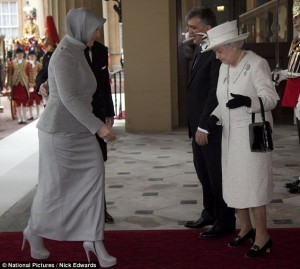 The Queen, ever the symbol of restraint and decorum in a world that has become excessively overt in its expression, was clearly shocked. Even the paparazzi managed to capture her gobsmacked on film. Behind one's frown one was wondering if it was a cackle of hilarity that was being suppressed, or a grimace of horror. Her Majesty has seen everything but the six-inch futuristic spikes shocked even her.
The Queen, ever the symbol of restraint and decorum in a world that has become excessively overt in its expression, was clearly shocked. Even the paparazzi managed to capture her gobsmacked on film. Behind one's frown one was wondering if it was a cackle of hilarity that was being suppressed, or a grimace of horror. Her Majesty has seen everything but the six-inch futuristic spikes shocked even her.
President Gul's visit is important to both Britain and Turkey, who are looking to strengthen their relations. Turkey is a rising power and one of the world's economies bucking the trend of the current financial crisis. Turkey is a friend Britain wants to have. So it is hard to know if the British media coverage of the shocking heels will help or hinder diplomacy. Hairunnisa Gul is more usually controversial for wearing her headscarf in her capacity as wife of the president, something that has outraged Turkey's hardline secularists. It is a welcome change – perhaps a calculated one – to divert attention to her feet.
The British press rather like the shoes of high- profile women. Last year Sheikha Mozah, the wife of the Emir of Qatar, captured the attention of the print media with her fur boots with "icicle" heels. Her shoes were a hit and marked her out as a leading lady to watch.
Leading British ladies are wearing more demure footwear. The Queen of course has her conservative pumps. Earlier this summer, Theresa May MP, one of Britain's most senior female politicians, was splashed all over the press after mis-telling a story about a man supposedly granted leave to stay in Britain because he owned a cat. She made great media fodder because the shoes she was wearing that day were cute little leopard skin kitten heels.
Research released this week by IBM suggests that the height of women's heels can tell us something about the state of the economy. It is a bit like the Hemline Index, which was proposed in 1926 by George Taylor. It suggested that women's hemlines go up in boom times, and down in recession. The inverse relationship applies to heels.
According to the IBM expert: "Usually, in an economic downturn, heels go up and stay up – as consumers turn to more flamboyant fashions as a means of fantasy and escape." Their research analysed social media discussions about heel heights. Contrary to expectations they found that heel height is about to go down. "This time, something different is happening – perhaps a mood of long-term austerity is evolving among consumers sparking a desire to reduce ostentation in everyday settings."
The fact that the leading ladies of Turkey and Qatar are wearing eye-popping heels tells us something important not about fashion, but about a new world order. For the second year in a row, Qatar is the world's fastest-growing economy. Turkey is one of the Next 11, and growing in stature politically. On the other hand, Britain's Queen along with Theresa May are wearing low pumps, and barely there kitten heels. Only time will tell which theory of heel height will prove true, and who is living in reality, and who is escaping into fantasy.
December 27, 2011
Looking back at some of the women who made 2011
Here's this week's column from The National
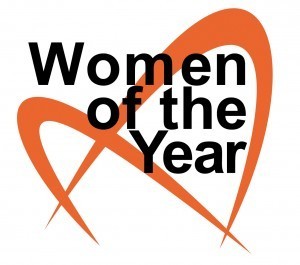
courtesy ywcacassclay
What a year for the women of the world!
For those fed on a Disney diet, there was the chance to live the dream of becoming a princess. Enter Kate Middleton, who married Prince William and may be Queen some day.
For those with economic dreams, Christine Lagarde became the first female managing director of the IMF. And for those with political leanings, Angela Merkel has taken an increasingly central role in Europe.
For peacemakers, the three women awarded the Nobel Peace Prize offered inspiration: Liberia's president Ellen Johnson Sirleaf, Leymah Gbowee, a Liberian peace activist, and Yemeni campaigner Tawakkol Karman.
And another activist in the year's phenomenal change was Asma Mahfouz, whose powerful YouTube video paved the way for Egypt's revolution.
Of course, handbags and shoes still grab the headlines. The spiky heels of the Turkish president's wife, Hayrunnisa Gul. won her a reputation for outrageous shoes wherever she goes.
Pakistan appointed its first female foreign minister (hurrah!). Despite her competence, on a trip to India it was her fashion sense and Birkin handbag that won plaudits.
But was it all shoes and handbags? Of course not. Incredible ordinary women through simple but profound actions have taken a stand for women's rights. Farzana Yasmin put her foot down against the illegal dowry system that remains culturally entrenched in Bangladesh and often results in enormous family debt, as well as abuse and even death of wives.
When the groom's family demanded "gifts" barely hours into the marriage, Yasmin demanded a divorce.
Manal Al Sharif was at the forefront of the Saudi women's campaign to secure the right to drive in Saudi Arabia. It's a daily activity we take for granted elsewhere.
There were women who got it spectacularly wrong. A failed Kuwaiti MP, Salwa Al Mutairi, suggested men should be allowed to have sex slaves (er, no) and that Chechnya was a great place to recruit them (I can't even begin to explain how wrong that is).
A Malaysian group of women set up the Obedient Wives Club with the ethos that if men strayed it was the wife's fault for failing in their conjugal duties. And don't get me started on the 27 wives of Israeli rabbis who warned Jewish women to avoid Arab men because they would use all sorts of tricks to lure them into marriage, changing their names and even being polite, but once the girls were in their evil clutches in their villages, they would suffer "cursings, beatings and humiliation".
There were men who got it wrong, too. In Bangladesh a husband chopped the fingers off his wife because she enrolled in a college for higher education. The woman is to be admired: she says she is practising writing with her left hand so she can continue her studies. The French president Nicolas Sarkozy was another, introducing the ban on the niqab in France, as did the Belgium prime minister, Yves Leterme.
How could I possibly include all the women who filled our headlines over the past 12 months, for their bravery and impact? I can't. But I offer my respect to them, and express my joy that the march towards a fairer, more respectful society for women might be slow, but the march does continue.
December 17, 2011
"All-American Muslim" – here is the parody
You've probably heard about the controversy over the reality TV show "All-American Muslim". The Florida Family Association is campaigning against it because it's too ordinary, and various advertisers are pulling their spots. What other option is there but to just laugh at the absolute ridiculousness of their position?
In my weekly column in The National, it's time for some fun to imagine the show that the FFA really want to see…
When it comes to reality television, most right-thinking people wish it would disappear into oblivion. But the actions of the little-known extremist group, Florida Family Association (FFA), are having the opposite effect. In response to the series following the lives of five ordinary American Muslim families going about their ordinary lives, it has declared: "All-American Muslim is propaganda that riskily hides the Islamic agenda." As a result, Lowe's hardware store pulled their adverts from the show.
The problem, the FFA says, is that the show "profiles only Muslims that appear to be ordinary folks, while excluding many Islamic believers whose agenda poses a clear and present danger to liberties and traditional values that the majority of Americans cherish". It's all too dull. Instead, what they want is more suicide bombers, virulent niqabis and Sharia-takeover plots. And they want it in reality TV format. Now that's a show I'd like to watch …
The programme opens with a woman dressed all in black, face covered, holding a copy of The Anarchist's Cookbook, turned to the "How to make a bomb" page. (FFA's Muslim checklist: preparation to blow up the US, check.)
The camera zooms in on her face-veil. Suddenly we hear in an Arabic accent: "Sharia Sharia, jihad, jihad" (face-veiled woman, check; spewing Sharia and jihad, check; "scary" accent, check).
Six children play with dynamite (Muslim takeover by stealth through population growth, check).
"This is Sara Valin," says the voice-over (a pun on "veiling" but rhymes with Palin, geddit?).
"In the garden, Accchhmed (the pantomime pronunciation of Ahmed) compares beard-lengths with some beardy friends." Ahmed strokes his copious facial hair like the Bond villain strokes his cat (world domination intent, check).
Next door at the mosque, a group of young men record a suicide bomber video. They are having trouble making the camera work. "Told him to buy the warranty," mutters one. "But he was too tight. Typical immigrant. Saving to import a wife."
The cameras follow Sara Valin to a Chai Party meeting. Outside flags with the words "death to America" flutter in the wind. Sara drags a 10 kilogram bag of fertiliser behind her. A woman with a "Sharia4USA" badge opens the door. "Fertiliser is Buy One Get One Free at Lowe's," remarks Sara.
The Chai Party meeting begins by discussing strategies to destroy America, how to make all turkeys halal and whether having a Muslim Miss America wearing a bikini was a clever tactic.
"First order of business: the programme Friends. It shows only ordinary Americans and is clearly propaganda for the USA. Friends does not represent America properly and so we must complain. There are no crack addicts, no soldiers abusing their prisoners, no Tim McVeigh character, and not even a hint of political sex scandal!"
Cut to commercial break sponsored by Lowe's.
Such a programme could save the FBI hundreds of millions of dollars in security and surveillance. After all, no need to hunt out prospective bombers. All they'd have to do is turn on the TV and watch "reality"; well, the kind of reality that only warped and bigoted minds constantly inhabit. How sad for them to live in a world they are trying to fill with so much hatred.
December 11, 2011
Brand Courage and the American Muslim consumer
The Arab Spring is opening a new frontier for brands, but American marketers may want to look a little closer to home. Ogilvy Noor's Shelina Janmohamed reports that engaging America's 7 million Muslims takes courage, but pays dividends.
Twelve months ago American Muslims were fired up with optimism that the moment had come for U.S. brands to embrace them.
In a struggling market, 7 million Muslim consumers with an estimated spending power of more than $170 billion seemed to have come of age at the very moment when brands were in greater need than ever of new growth opportunities.
But 12 months later brands still appear ambivalent despite the open arms with which Muslim consumers are inviting them in. So why are brands hesitant to commit themselves to serving this powerful demographic?
It's been a tumultuous year. The controversy over the mis-named "Ground Zero" mosque grabbed headlines around the world. Media-baiting Pastor Jones threatened to burn the Qur'an. Osama Bin Laden was killed. The 10th anniversary of 9/11 came and went.
And then the Arab Spring turned the Middle East upside down, igniting fears that Islamic governments with hostilities toward the West might sweep to power.
With this political backdrop you can hardly blame brands for being nervous about speaking publicly to Muslims and welcoming them into the bosom of their marketing strategy.
Friends in need
Despite the events of the past year, American Muslims continue to remain optimistic about their place in American society.
In a Gallup poll released in August of this year 60 percent of American Muslims said they are "thriving." Dalia Mogahed, the director of the Abu Dhabi Gallup Center which published the report, added that Muslims "feel a greater sense of belonging in their country" than they did in 2008.
What this means is that brands need to demonstrate commitment to the idea that that the Muslim consumer market is valuable. Muslim consumers recognize the political climate within which brands are operating, and appreciate them sticking their necks out. The response is loyalty, pride and collective endorsement. Friends in a time of need are not forgotten.
All-American Muslim
 The "Happy Eid Al-Adha" image on a Best Buy flyer sparked controversy, but ultimately won customers. Image courtesy of TechCrunch
The "Happy Eid Al-Adha" image on a Best Buy flyer sparked controversy, but ultimately won customers. Image courtesy of TechCrunchLast year, U.S. consumer electronics retailer Best Buy prompted a backlash when it referenced the Muslim festival of Eid in a holiday flyer. Best Buy stood by its decision, winning the support of Muslim consumers in the process.
This year's marketing campaign by health food supermarket chain Whole Foods to promote Saffron Road halal foods during the month of Ramadan also faced criticism. They too held firm, sales went up 300 percent and Whole Foods acquired a new segment of customers.
Just last month, TV channel TLC began airing an eight-part series calledAll-American Muslim, which follows the lives of five American Muslim families in Dearborn, Michigan. The pilot episode pulled the second-highest ratings of the station's reality TV shows, beaten only by Sarah Palin's Alaska.
Predictably, the show has stirred controversy but TLC has kept it on the air and it continues to gain ratings. From a brand perspective this kind of courage is proof that addressing Muslims can and does pay off, and that mainstream America is ready and willing to watch.
But other Muslim-centric content has fallen foul of the political climate. A new superhero cartoon series called The 99, based on the Islamic idea of God having 99 attributes, was bought by a mainstream American channel. With the inflamed political backdrop, the channel has shelved it indefinitely. This is a case where courage is much needed.

From kosher to halal
There is great precedent for American brands reaching out to segments that are part of the fabric of American life, even in the face of objections. In 1911, Procter & Gamble was the first company to advertise that its vegetable shortening product, Crisco, was kosher.
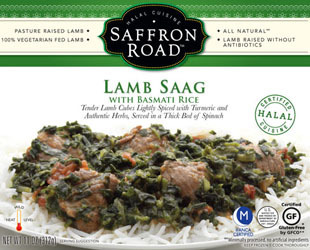 Whole Foods increased sales by 300 percent by selling Saffron Road Halal products
Whole Foods increased sales by 300 percent by selling Saffron Road Halal productsIn 1915 the New York State Legislature enacted the United States' first Kosher Food Law, which was to serve as a model for all subsequent kosher food legislation. This law has been challenged again and again by those who claim it is unconstitutional, but it has stood the test of time.
The U.S. kosher market has grown today to an estimated $12.5 billion, but only 25 percent of kosher consumers are actually observant Jews. Other consumers believe simply that kosher food is healthier. Muslims believe that halal food will have wider appeal than its core target Muslim consumer for similar reasons.
Courage and rewards
The lesson from these examples is that courage and investment in communities pay off. Muslims will respect and show loyalty to brands that support them in the public space. They are not asking for political or media support. In fact they want brands to avoid the political discourse and treat them as mainstream consumers with mainstream needs.
The events of the last year indicate that companies will need to demonstrate courage in embracing this strategy. The good news is that Muslim consumers recognize this and the reward from them is loyalty and public devotion.
Update: As of publishing this column on spirit21 (11th Dec), Lowes have announced that they will be pulling their advertisements from the TV show All-American Muslim after pressure from the Florida Family Association who said that the programme was misleading because it didn't feature any extremist Muslims and was therefore furthering an agenda to bring down America.
This is my column written for Ogilvy Noor and published at sparksheet.com
Shelina Zahra Janmohamed's Blog
- Shelina Zahra Janmohamed's profile
- 175 followers





